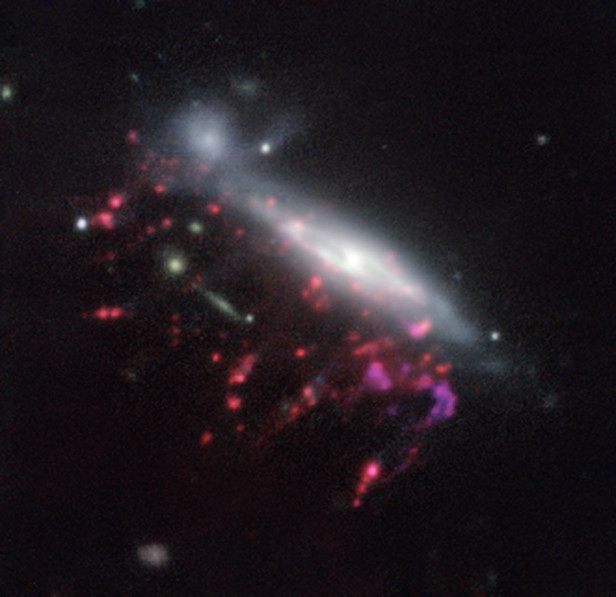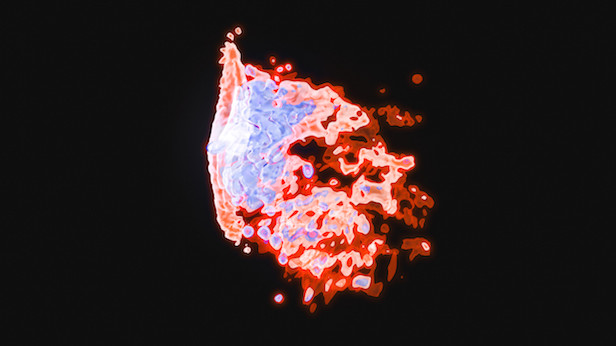Supermassive black holes thrive in ‘jellyfish’ galaxies
Astronomers have unearthed a new process for how a galaxy feeds the supermassive black hole at its core

The ‘tentacles’ of gas and stars feed the supply the central region with the fuel for the supermassive black hole, creating the spectacular central concentration of light. Image credit: ESO/GASP Collaboration
Research conducted on the peculiar category of galaxies, the ‘jellyfish galaxy’, has shown a previously unknown process of feeding supermassive black holes. It appears that not only do its ‘tentacles’ of gas and stars fuel intense star formation, but they also replenish the gas at the galactic centre. The supermassive black hole that resides in many galaxies can now feed on the abundance of surrounding gas.
This study was led by an Italian-led team of astronomers using the Very Large Telescope’s (VLT) Multi-Unit Spectroscopic Explorer (MUSE), located at the Paranal Observatory in Chile. This study was originally intended to reveal how gas is stripped from galaxies.
By studying jelly galaxies, the research team seemed to unintentionally unearth a new process of feeding galaxies. In the case of these aquatic-cosmic hybrids, it is visually clear that gas is stripped away from the normal plane of the galaxy. This occurs when one of these ginormous structures enters a galactic cluster and interacts with the intracluster medium (ICM) – the plasma that fills the group.
The ICM acts as a powerful wind, and forces tentacles of gas to emerge from the galaxy’s disc – also known as ram pressure stripping – thus triggering large amounts of star formation. What this team of astronomers have shown is that out of the seven jellyfish galaxies analysed, six of them had supermassive black holes in the centre feeding off surrounding material. This ratio is uncommonly high, as with galaxies in general, the number of the supermassive black holes being active is normally one in ten.

A visualization of a jellyfish galaxy in the 3D view of the MUSE instrument. It shows the ram pressure stripping that has occurred, as the ‘tentacles’ extending to the right. Image credit: ESO
“This strong link between ram pressure stripping and active black holes was not predicted and has never been reported before,” says Bianca Poggianti of the INAF-Astronomical Observatory of Padova, Italy. “It seems that the central black hole is being fed because some of the gas, rather than being removed, reaches the galaxy centre.”
Although this doesn’t answer the long-standing questions of why such a small percentage of supermassive black holes are not active. This can provide more of an insight as to the different mechanisms at work, particularly when it comes to the feeding of supermassive black holes. ESO Research Fellow, and contributor to the study, Yara Jaffé says, “These MUSE observations suggest a novel mechanism for gas to be funnelled towards the black hole’s neighbourhood. This result is important because it provides a new piece in the puzzle of the poorly understood connections between supermassive black holes and their host galaxies.”
Keep up to date with the latest space news in All About Space – available every month for just £4.99. Alternatively you can subscribe here for a fraction of the price!




